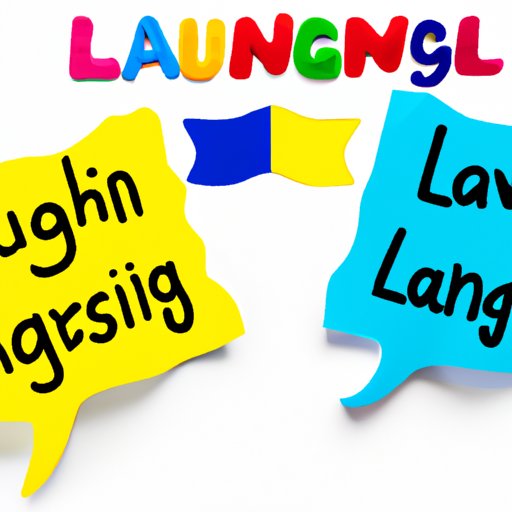
Introduction
Learning a new language is a challenging but rewarding experience. But what if you want to go further and learn two languages simultaneously? Is it possible? Can it be done without confusion and frustration? In this article, we will explore the challenges and benefits of learning two languages at the same time and provide tips and strategies from experts and researchers on how to achieve this goal. Whether you are an ambitious learner or a curious linguist, this guide will help you make the most of your multilingual journey.
The Pros and Cons of Learning Two Languages Simultaneously: Is It Worth the Effort?
Learning two languages at once can improve your cognitive skills, increase your job opportunities, and enhance your cultural experiences. It can be essential if you need to communicate with people who speak different languages, whether in your personal or professional life. It can also be a fun and challenging way to expand your knowledge and broaden your horizons.
However, there are also challenges and potential drawbacks that you need to consider. Learning two languages simultaneously can be confusing and slower than learning one language at a time. There is also the risk of mixing up the two languages, especially if they are similar. Furthermore, learning multiple languages requires a significant amount of time and effort, which can be challenging to sustain.
Strategies for Learning Two Languages at the Same Time: Tips and Tricks from Multilingual Experts
Now that you know the pros and cons of learning two languages simultaneously let’s explore some strategies that can help you make this journey smoother and more successful. We have gathered practical advice from multilingual experts who have successfully learned multiple languages at once.
First, it is vital to establish a solid foundation in one language before starting the second language. This way, you can avoid confusion and build a strong base for learning the new language.
Second, set realistic goals and be patient. Learning multiple languages requires time, effort, and perseverance. Don’t expect quick results, and don’t be too hard on yourself if you make mistakes or face challenges.
Third, prioritize practice time. Consistency is key when learning multiple languages. Try to practice each language daily, even if only for a short time.
The Science of Bilingualism: How Learning Two Languages at the Same Time Can Benefit Your Brain
Learning multiple languages can be more than just a tool for communication. It can have significant cognitive benefits. Research has shown that bilingualism can improve memory, attention, and cognitive flexibility. It can also delay the onset of dementia and other cognitive disorders.
Bilingualism may also change the way we think and process information. Bilingual people have been found to be better at connected thinking and problem-solving. They can more easily switch between tasks and have a more creative approach to problem-solving.
How to Keep Two Languages Separate in Your Brain: Avoiding Common Mistakes When Learning Multiple Languages
When you learn two languages at the same time, it is essential to keep them separate in your brain to avoid confusion and mixing them up. There are several strategies you can use to achieve this. One strategy is to practice each language in different contexts. For example, you can listen to music or watch movies in one language and read books or articles in the other language. Another strategy is to avoid translating directly between languages. Instead, try to think in each language independently.
Another common challenge when learning multiple languages is mixing up vocabulary. To avoid this, you can use flashcards or other memory techniques to keep track of words and their meanings. You can also focus on one language at a time and switch between them regularly to practice.
The Joy of Learning Multiple Languages: Embracing the Challenge and Discovering New Cultures
Learning multiple languages can be a tough but exhilarating journey. It allows you to connect with people from different backgrounds and cultures, expand your worldview, and discover new opportunities. It can also make you more adaptable and flexible, both in your personal and professional life.
Embrace the challenge and enjoy the process. Don’t be afraid to make mistakes or ask for help. Learn from your experiences, and be proud of your progress. Remember that learning multiple languages is not just about mastering grammar and vocabulary. It’s also about immersing yourself in a new world of possibilities.
Conclusion
Learning two languages at once can be a challenging but rewarding experience. While there are potential drawbacks and challenges, such as confusion and slower progress, there are also significant benefits, including cognitive enhancement, increased job opportunities, and cultural enrichment. To make the most of your multilingual journey, establish a solid foundation in one language, set realistic goals, prioritize practice time, and use strategies to keep separate languages in your brain. Finally, embrace the challenges and enjoy the process, and you will discover a new world of opportunities.





